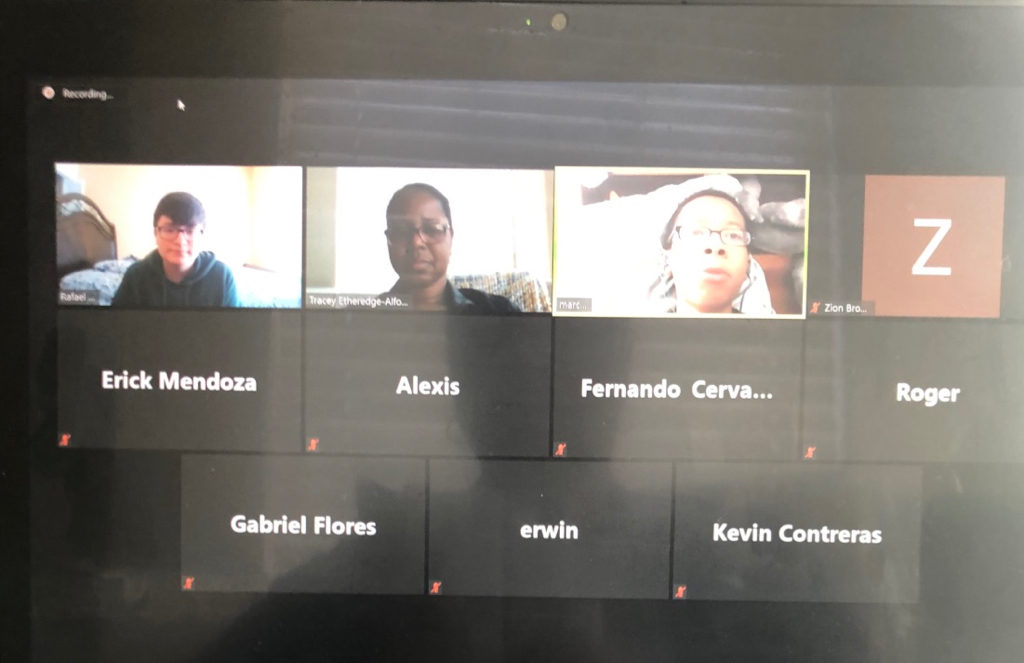Education in the Age of COVID-19: How BOMLA Teachers Kept the Connection

 BOMLA math and student leadership teacher Tracey Etheredge-Alford last saw her students face-to-face before spring break. When school resumed, because of the impacts from COVID-19, her freshmen through senior-level classes existed solely online. But Etheredge-Alford wasn’t going to let a screen stand in the way of great education.
BOMLA math and student leadership teacher Tracey Etheredge-Alford last saw her students face-to-face before spring break. When school resumed, because of the impacts from COVID-19, her freshmen through senior-level classes existed solely online. But Etheredge-Alford wasn’t going to let a screen stand in the way of great education.
“I knew I wanted to still be able to interact with the young men, so during spring break I experimented with Google Meets and Zoom, using my family as test subjects,” Etheredge-Alford said. “By the time we returned from break, I moved right into teaching online, ultimately choosing Zoom for its ability to allow me to record my lessons for students who were unable to attend the live sessions.”
Using Zoom as the virtual meeting platform paired with Google Classroom to track assignments and activities allowed Etheredge-Alford to keep her classrooms moving. To maintain a sense of routine, she kept a regular schedule Tuesday through Friday, where she met with all classes during their normal block, with the exception of reducing class times to 45 to 60 minutes versus their usual hour and a half.
Even with the most advanced technology, though, comes challenges when teachers are not face-to-face with their students. For Etheredge-Alford, this means finding alternative avenues to receive feedback and questions.
“My teaching style is highly depended on student interaction, so I still find myself trying to make adjustments in this area,” Etheredge-Alford said. “I have relied heavily on student body language to decide students’ level of understanding because some are not always comfortable asking questions when they don’t understand. I also started assigning more reflection pieces as it helps me to get a better understanding about how students are feeling about what they are learning.”
Etheredge-Alford is also an advocate for student collaboration and has been able to “group” students online into virtual breakout sessions for them to discuss a topic or solve a problem together.
While online learning isn’t always ideal compared to the classroom setting, Etheredge-Alford has seen resiliency from her students.
“Interestingly enough, the student leadership class was my best attended class throughout this venture,” she said. “I had about 75 to 80 percent of the students participating each class period. They each were charged with leading self-chosen prompts based on current events, which was often the source of lively discussions.”
As teachers, students and their families adjust to this new educational setting, Etheredge-Alford’s advice is simple: take this time as an opportunity for growth.
“Don’t get discouraged if you are unsuccessful initially,” she said. “Find a routine that works for you and your family. As you work through what it will take to be successful academically, be sure to find opportunities to take care of yourself socially and emotionally, as well.”
